It's dead.
The autopsy complete.
First I checked to make sure I was getting proper voltage to the pins. 120v confirmed
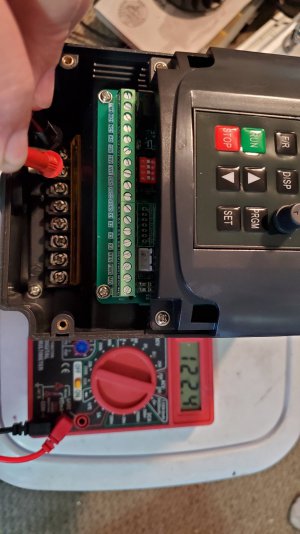
I don't know what happened to the first few photos I took but I exposed the top board and inspected all the components for damage. They all appeared fine, at first.
Next I took apart the unit and removed the top board. It was pretty obvious where the pop was. The weird thing is that this is where the burn was most prominent but there'd no actual connection here, or is there?
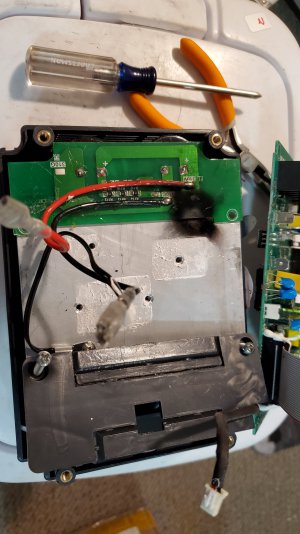
This spot is opposite of where the burn is above. It looks like something popped here but with the 10X loop I couldn't really see any bad connections. Maybe a tiny bit of trace delamination but it still looked like it was connected.
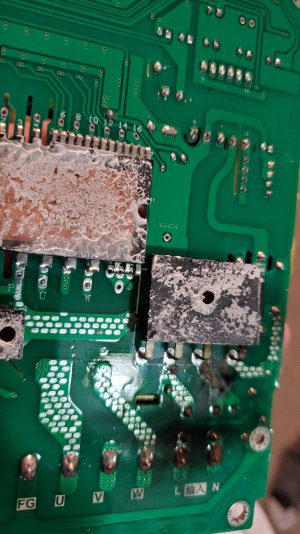
I'm not entirely sure this was designed or assembled right. That solder spot o the board where it's close to the aluminum heat sink just doesn't seem right. Since I don't know if it was designed this way or not, I kept looking.
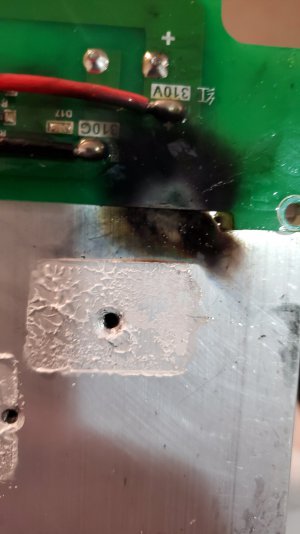
Looking at the board below it's hard to see. The yellow relay is directly on top of where the soot blast was in the picture above. With a closer inspection I can see why I won't bother fixing it.
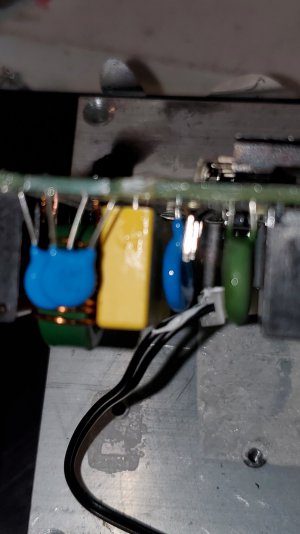
It's difficult to see but there's definite trace delamination there. The trace blew like a fuse. I could solder jumpers to clear the bad trace but at this point I think I'll cut my losses and just buy another inverter. It kind of pisses me off because I think I may have gotten a faulty unit but I also know I hooked it up wrong.
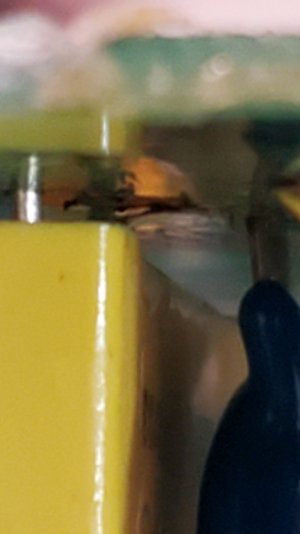
All in all, I'm not a happy camper about this.
Looking at the ground symbol in the plastic leads me to believe there's a ground in that area. There's the brake - symbol and the ground symbol. THe #6 lug supposedly a ground.
The screw by the plastic ground symbol wouldn't have grounded it. The #6 ground is what I had hooked up when the unit blew. And I blew my house circuit when I had the - on the brake hooked up.
Maybe the next one will go better.
I am concerned, however, that the 220v version says "line" and neutral also. 220v in the states doesn't have a neutral. How's that supposed to work?







